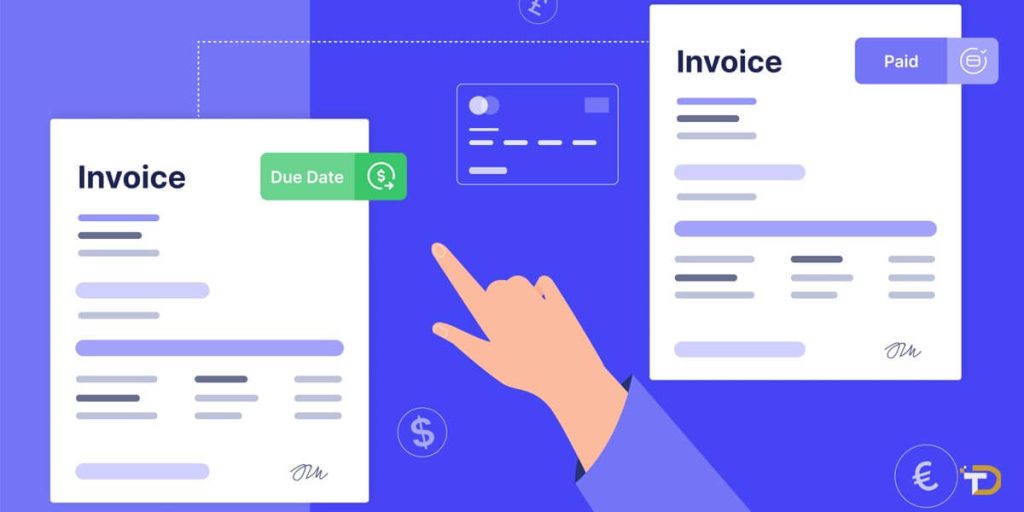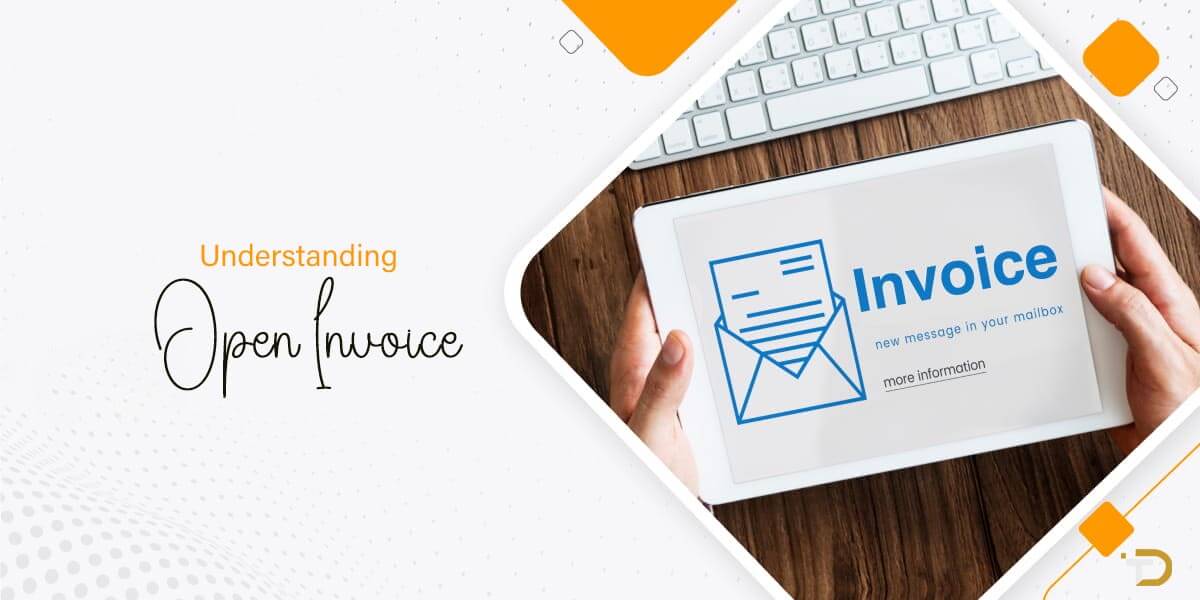Understanding Open Invoice: A Comprehensive Guide
For firms all around the globe, issuing invoices is an essential aspect of running a business. The provider often issues an invoice to the buyer in order to collect payment for the goods or services rendered. Nevertheless, there is a time frame during which the invoice is “open” or outstanding, from the time it is issued until payment is received.
What is an Open Invoice?
Any invoice that has been sent to the client but has not been paid by the due date is considered an open invoice. Open invoices are the basis for all invoices; they reflect the amount the client owes for services or commodities that have already been provided or used. In addition to recording transactions between the buyer and seller, the open invoice also helps the supplier keep tabs on their receivables and cash flow.
The audit trail is completed when the open invoice is changed to a closed status, which occurs only after the customer pays. The supplier’s financial records will show that the invoice is considered outstanding throughout the period between its issuance and payment. Details on open bills, organized by length of time outstanding, are also included in an account receivable aging report from a supplier.
Key characteristics of an open invoice include:
- Invoice number for tracking purposes
- Company names and addresses of provider (payee) and customer (payer)
- Date(s) of transaction and invoice issuance
- An itemized list of goods/services purchased, including quantities, prices, and totals
- Applicable taxes
- Agreed upon payment terms (e.g. net 30 days)
- Outstanding balance amount due
By definition, all invoices start as open invoices. The goal is then to process payments according to the agreed-upon terms so invoices can promptly transition from open to closed.
Understanding Open Invoices
Now that we understand what constitutes an open invoice at a basic level let’s explore some additional contexts regarding how they function within a business environment.
Invoice Lifecycle
The typical lifecycle of an invoice starts with its issuance by the provider after a transaction occurs. The customer’s accounting team will then receive and process the open invoice. This may involve verifying the details match what was ordered and received. Once validated, the open invoice enters the customer’s accounts payable system and is monitored until payment is made according to the agreed-upon payment terms.
The provider will receive payment and apply it to close out the corresponding open invoice. Both parties then remove the paid invoice from their open balances and update their accounting records accordingly. Any discrepancies or issues with an invoice may require resolution between the customer and provider before it can progress through this lifecycle.
Payment Terms

Establishing clear payment terms is important for managing open invoices effectively. These terms outline the period within which payment is expected to be received after invoice issuance or delivery of goods/services. Common terms include:
- Net 30: Payment is due within 30 days of the invoice date or delivery of goods/services
- Net 45: Payment timeframe is 45 days
- Net 60: Payment timeframe is 60 days
- Net 90: Longer payment period of 90 days
- Custom terms: Terms can be customized based on industry norms or client agreements
It’s best to have standard payment terms upfront to avoid confusion. Invoices that remain open past the agreed-upon terms may be considered overdue and subject to late fees or penalties.
Types of Open Invoices
While all invoices start as open records initially, there are a few main categories of open invoices companies typically deal with in their accounting workflows:
Manual offline payments: Checks, cash, or bank transfers are still pending and require manual confirmation.
Online pending payments: Automated online payments initiated by a payment processor but still need to be transferred pending confirmation.
Bills: Past-due invoices are still outstanding and owed by the customer.
Incomplete payments: Payments not made by the customer despite receiving the invoice, often due to errors.
Discounts/fees: Invoices may include early payment discounts or late fees as applicable.
Accounting teams must understand these types of open invoices and monitor them accordingly based on risk level and potential impact on cash flow.
Read More: Role of Packing Slip in Logistics and Order Fulfillment
Challenges of Open Invoices
While open invoices are a natural part of doing business that allows for net payment periods, they do present some potential challenges if not managed properly:
- Cash flow issues can arise if too many invoices remain open for too long and payments are delayed. This restricts working capital.
- Late or non-payment of invoices increases days sales outstanding (DSO) metrics and impacts profitability.
- Disputes or inaccuracies in invoices may cause payment delays once issues are resolved.
- Poor visibility into open invoices makes it hard to prioritize the collection of past-due amounts.
- Unstandardized terms, policies, and follow-up protocols lead to inconsistencies.
- Failure to charge late fees as allowed may reinforce late or non-payment behaviours by customers.
- Writing off substantial invoice amounts as uncollectible bad debt hurts the bottom line.
- Customers may lose payment privileges or credit status due to persistent late payments.
Taking proactive steps to minimize these risks through diligent open invoice management practices is important for healthy business operations and relationships.
From Open to Closed

To summarize the key stages in the lifecycle of an open invoice, here are the typical steps:
The provider delivers goods/services and issues a formal invoice to the customer. The customer receives and processes the new open invoice, verifying that the details are accurate. Open invoice is recorded in the customer’s accounts payable system according to agreed-upon payment terms (e.g. net 30). The customerThe customer remits payment to the provider before the due date per the terms.
Provider receives payment and applies it to close out the corresponding open invoice. The provider and customer remove the paid invoice from their open balances and update their accounting records accordingly. Any discrepancies, such as short payments, payment errors or invoice disputes, require coordination between the parties to resolve before the invoice can progress through the full lifecycle.
If payment is not received by the due date, the open invoice becomes overdue and may accrue late fees or penalties according to company policies and applicable regulations. Overdue invoices require prompt follow-up by the provider’s accounting team through phone calls, emails and potentially legal notices to collect payment. As a last resort, long outstanding invoices may need to be sent to collections agencies or pursued in small claims court if the customer refuses to pay. This can damage business relationships.
To avoid such negative scenarios, diligent open invoice management is recommended, including proactive communication, standardized processes and accounting system integration. Automating invoice delivery, tracking and payment reminders through accounting software streamlines both parties’ processes. Early payment discounts incentivize customers to close invoices quicker to benefit cash flow.
Regular account statements showing itemized invoices, payments and balances prevent disputes over what is owed. Negotiating customized payment plans for strategic customers with cash flow challenges prevents write-offs. Ultimately, the goal is to minimize days sales outstanding and collect full payment on all invoices to fuel business growth and expansion plans. With open invoice best practices, this goal is more achievable.
Conclusion
In conclusion, while open invoices are a natural byproduct of conducting business on credit terms, proactive management through clear policies, integrated systems, and regular communication helps minimize risks. Invoices are resolved promptly, creating win-win outcomes for both customers and providers.





